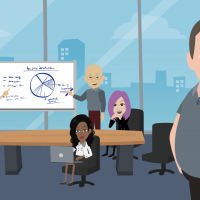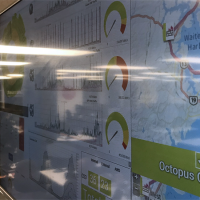At Telnet we introduced the concept of a One Team environment a number of years ago and have seen numerous benefits in doing so for our clients, our staff and for Telnet. Despite its success we are aware that many organisations may not be aware of how this model actually works and how employing an outsourced contact centre that uses this model can have huge benefits for your company or organisation. With this in mind, today I hope to shed some light on this model based on my experience and how it can work for you.
The core principle of the One Team model sounds simple enough; to train frontline agents across multiple contact points and campaigns. However, implementing and managing such a model comes with a number of challenges such as how frequently do you train an agent in a new line of contact, how do you ensure the agent has sufficient support across the campaigns, does your software allow for a seamless agent experience when moving from one campaign contact to another unrelated one immediately after?
For Telnet, the use of ContactSuite and SenseIQ were integral to making this work as without the in-CRM access to a knowledge base and intuitive design of ContactSuite this would have been impossible or at the very least resulted in agent burn out. By being able to have completely unrelated campaigns share a design and function format in a single CRM our agents are able to move from one contact/campaign to the next without having to readjust to a completely different format of working between each contact.
Whilst the wins for Telnet seem clear with increased utilisation of frontline agent occupancy, the wins for the agents may not be apartment at first glance. As someone who worked under this model and has trained agents in the same, I can say from personal experience that there are a number of benefits. The biggest one is reduced agent redundancy, say one campaign ends, as an agent you are already skilled up in multiple other campaigns, so your employment remains unaffected. In addition, should the agent decide to move on or up, their experience is now vastly broader than it would be in a dedicated environment opening up more opportunities for them.
Now with all of this said, what are the benefits for our clients; they are many and varied:
• The agents working on your contact channels have a broad skill base which will show in their problem-solving abilities on your campaign.
• The One Team model allows for a much more client centric pricing model so you can have a high quality of customer experience at a lower cost than dedicated inhouse staff.
• An increased staffing pool becomes available to allow for easier ramp up of new projects.
At this point in time, we have a large number of both private companies and Government agencies utilising the One team model through Telnet to great success. We have witnessed and measured the benefits of this model for a number of years now and can wholeheartedly say it has been a boon for all involved. As you can see the benefits of a One Team model are substantial and offer upsides to all aspects of not just Telnet’s business but our frontline staff and clients as well. As we move into 2023, I look forward to further innovation at Telnet in the Contact Centre space and how we can use our decades of experience to further improve the services we offer.
Written by Sam Rae







